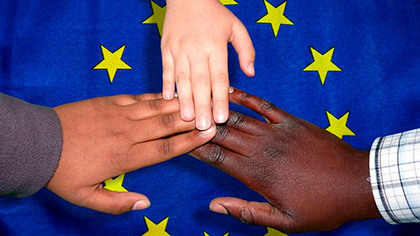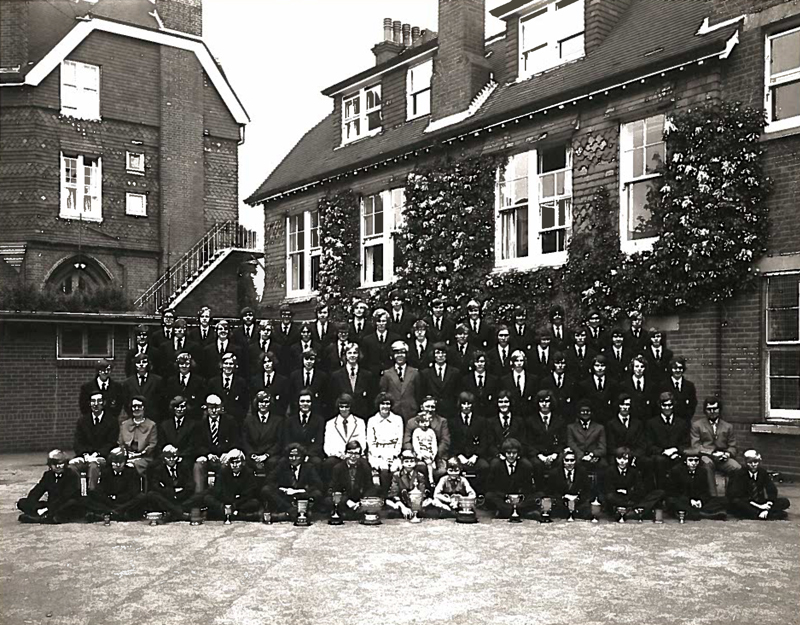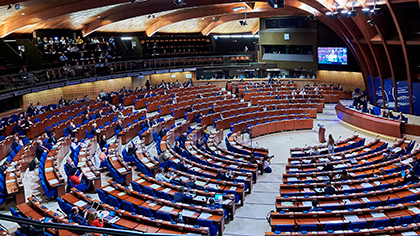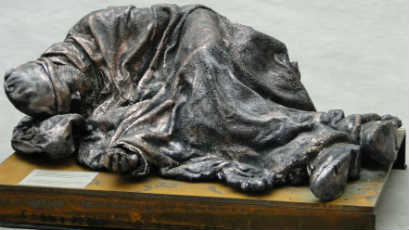Asset Publisher

12 gold stars on a sky blue background
Adoption of the European flag – 1955
Charles Kohler

Adopted by the Council of Europe in autumn 1955, the European flag also became the banner of the European Communities 30 years later. More importantly, throughout the historical changes our continent has faced since the 1950s, it became a symbol of the values on which the European project is based: freedom, democracy, human rights and peace. Charles Kohler, tells us this fascinating story, whilst doing justice to his colleagues: Arsène Heitz, the designer of the flag, a modest official working in the mail office, and Paul Lévy, who led the project in his capacity as the first Director of Information of the Council of Europe.
When I joined the Council of Europe on 1 May 1960, I never thought that one day I would write an article on how, five years earlier, the “sky blue flag with 12 gold stars” had been adopted in two stages: a unanimous vote by the Parliamentary Assembly on 25 October 1955, followed by the Committee of Ministers’ ratification on 8 December of the same year. The adoption of the European emblem was the result of a long process during which many proposals were considered, beginning in August 1950 – barely a year after the entry into force of the Council of Europe’s statute – by a committee set up by the Consultative Assembly comprising members of parliament from the 12 and then 15 member states.
It was through philately, first of all, that I got to know Arsène Heitz, the “father” of the European flag, a colleague responsible for sorting mail within the administration, who had great artistic talents and was strongly committed to the European cause. Council of Europe stamps were issued on a regular basis with texts highlighting his contribution to devising some 20 proposals for a flag at the request of Paul Lévy, the Director of Information, who had been tasked with submitting proposals to the relevant committee of the Assembly and to its rapporteur, Robert Bichet, member of parliament for the Franche-Comté region.
It was only much later that I had the opportunity to make a contribution and give some advice, as Director of the Private Office of Franz Karasek, the Secretary General, in connection with the procedure for choosing a flag launched by the European Parliament.
I was fortunate enough to finally get to know Arsène Heitz and become his friend shortly before he retired.
The adoption of the Council of Europe flag (1950-1955)
Jean-Marie Mouchot, my former colleague, witnessed the adoption of the European flag by the Council of Europe, having not only participated in the Consultative Assembly’s first meeting at the University of Strasbourg, but also been Secretary to the Rules Committee in charge of proposing a new emblem. He described the events which led to its adoption as follows:
I was lucky enough to be among the small group of staff members from Paris, London, Rome, and Brussels, Copenhagen, and so on., sent to Strasbourg for the August 1949 session of the Council of Europe Assembly. I was put in charge of the Assembly Rules Committee whose elected chair was Frans van Cauwelaert, the then President of the Belgian Senate and Mayor of Antwerp, with whom I forged a lasting friendship.
It was this committee which, one year later, received a proposal to give the Council of Europe its own flag to be placed next to those of the member states. The project was presented by Paul M. G. Lévy, Director of Information within the General Secretariat – a person with remarkable intellectual abilities and a staunch believer in the European ideal. Lost in endless discussions on a large number of projects from all parts of Europe, he asked Arsène Heitz,
a humble Council of Europe staff member and talented artist, to draw several sketches, which were varied in terms of design and colours. Any similarity with a national flag or with a federalist connotation (in particular, stars and stripes) had to be avoided.
After three years of discussions, in September 1953 the Assembly opted for a flag of 15 gold stars forming a circle on a sky blue background, representing the member states at the time. However, this design was turned down by the Committee of Ministers because of differences of opinion between France and Germany about the future of Saarland, which was then an associate member of the Council of Europe: Paris wanted its status to remain unchanged, while Bonn was pushing hard for the territory to be returned to the Federal Republic.
After a year’s indecision, a joint committee comprising three parliamentarians and three representatives of the member states was set up to find a solution. It was there that the idea of setting the number of stars at 12, symbolising unity and perfection, gained ground, after several other proposals had met with opposition from the member states’ ambassadors, who were following the discussions closely. In September 1955, the matter was again referred to the Assembly’s Rules Committee, which was asked to decide between two designs, both with gold stars on a sky blue background: a pattern of stars representing the capitals of the member states, with an additional star for Strasbourg, which was proposed by Salvador de Madariaga; and a crown of 12 stars, designed by Arsène Heitz, which, apart from the number of stars, was the same as the design adopted two years previously. The committee chose the latter, to the satisfaction of Frans van Cauwelaert, the rapporteur, Robert Bichet, and Paul Lévy.
The proposal was presented to the Assembly which adopted it unanimously, and was then ratified by the Committee of Ministers without further ado. The European flag was officially presented at the opening of the Council of Europe’s ministerial session in Paris on 13 December 1955 and then gradually became the easily recognisable symbol that it is today. A decisive step was taken when the European Parliament asked the Council of Europe for permission to adopt the same emblem – which was immediately granted: the European flag then became a symbol of the harmony between the countries of our old continent determined to put an end to historical quarrels and to work out their differences.
If you wish to continue your reading, you may buy the book "Europe: a human enterprise".
Charles KOHLER
Having lived the experience of war and of Nazi occupation, Charles became a European activist after the Second World War. He joined the Council of Europe in 1960, working successively in the Directorate of Economic and Social Affairs and the Resettlement Fund. In 1974 he was appointed Deputy Secretary to the Committee of Ministers, before becoming Head of the Work Programme Division in 1976. From 1980 to 1984, he served as the Head of Private Office of the Secretary General. After that, he held successive posts as Deputy Director of Administration and Finance, Deputy Director of Environment and Local Authorities and finally Financial Controller. After his retirement in 1992, he dedicated himself to the Mouvement européen Alsace of which he was the long-standing president. He died in May 2019.




